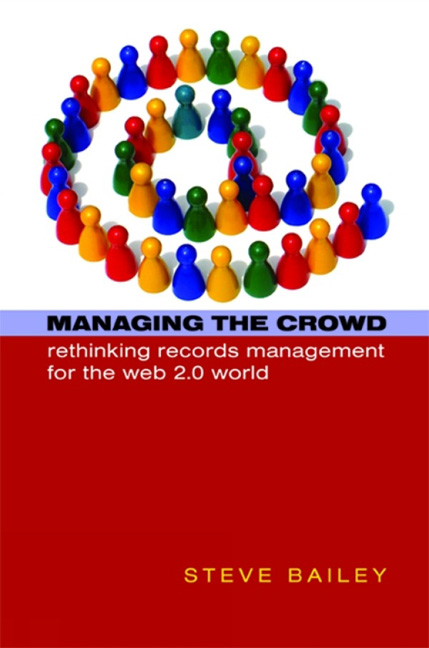Book contents
- Frontmatter
- Dedication
- Contents
- Foreword
- Preface
- Part 1 The Nature Of The Changing World
- 1 The big picture: Web 2.0 and current trends in IT
- 2 The reality check: surely change is endemic in IT?
- 3 Web 2.0 and Office 2.0: enter the third paradigm
- 4 Welcome to the world of Office 2.0
- Part 2 Is records management no longer fit for purpose?
- Part 3 Records Management.0 And The Future Of Records Management 121
- Index
2 - The reality check: surely change is endemic in IT?
from Part 1 - The Nature Of The Changing World
Published online by Cambridge University Press: 08 June 2018
- Frontmatter
- Dedication
- Contents
- Foreword
- Preface
- Part 1 The Nature Of The Changing World
- 1 The big picture: Web 2.0 and current trends in IT
- 2 The reality check: surely change is endemic in IT?
- 3 Web 2.0 and Office 2.0: enter the third paradigm
- 4 Welcome to the world of Office 2.0
- Part 2 Is records management no longer fit for purpose?
- Part 3 Records Management.0 And The Future Of Records Management 121
- Index
Summary
Questions addressed in this chapter
• Is Web 2.0 simply the latest stage in a continuum of IT change?
• How different is the office of today from the workplace of 1997 and what does this tell us about the nature of the change likely to accompany Web 2.0?
• Is it possible to identify major ‘paradigms’ within the history of IT development, and if so, how has records management responded to them?
Change as the only constant in IT
Everybody knows that the only constant thing in IT is change. If the last 20 or 30 years have taught us anything it is surely that the forward march of technology is relentless and unstoppable. At a superficial level one only has to view with our 21st century eyes how Hollywood was portraying cutting-edge technology in the 1980s, in films such as War Games for example, to see how laughably outdated and obsolete it all looks. Scenes set in offices filled with green screens displaying jerky vector graphics, printers spewing out ream after continuous ream of hole-punched printer paper and actors struggling to lift house-brick heavy mobile phones to their ears.
Even within our own lives and experiences we can see obvious echoes of this change. Contrast the size and speed of your first laptop with the sleek, slim-line model you currently use; the complex line commands of DOS compared with the familiarity and ease of use of Windows; the speed of an 8MB domestic broadband service as opposed to the slow torture of a dial-up connection.
Change is the oxygen that the IT industry breathes. Without it there is no improvement and, more importantly, no incentive for the user to upgrade. Satisfaction with the status quo is not good for sales. No sooner have you taken the plunge and bought their latest model than you see advertisements in the press proudly announcing the launch of their next model, which sweeps away all before it. Of course, within the IT industry the motivation for change is also largely driven by ever increasing capacity, and the constant pushing of technical and engineering boundaries by some of the world's largest research and development budgets. More efficient hardware enables the development of more complex applications, which in turn empower the user to undertake evermore advanced activities.
- Type
- Chapter
- Information
- Managing the CrowdRethinking records management for the Web 2.0 world, pp. 17 - 24Publisher: FacetPrint publication year: 2008

